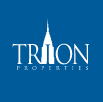Investments Portfolio – METRO 77 & 85
The world of real estate investing provides a variety of opportunities with different risk vs. reward tradeoffs. Value-add properties offer balanced risk with impressive investor returns for those who choose to back these projects. The term “value-add” refers to the work that companies like Trion take on to improve the property’s value with modern features, upgrades, and operational enhancements that allow them to charge residents more while taking advantage of appreciation. Investors considering value-add strategies should know the elements that make a property a prime candidate for minimal risk and maximum returns. This guide will help you learn everything you need to know to determine if these investments are the best fit for your portfolio.
What Are Value-Add Real Estate Investments?
Value-add properties belong to a class of private equity investment types that encompass four levels of risk. The property risk vs. return continuum uses the following designations to classify investments into:
Core Properties – These are the newest properties with stable occupancy in extremely desirable areas. Because of this, they havethe lowest risk and yield modest returns of around 7-9% internal rates of return for investors.
Core-Plus – These high-quality investments are slightly riskier than core properties as the buildings tend to be around 10-15 years old. With small improvements to units and management, cash flows can be upgraded while attracting better tenants. Investors can expect a 10-12% return.
Value-Add – Value-add properties are ideal for those with a moderate to high risk tolerance that seek high returns. These properties aren’t being used to their full potential and commonly have issues with management, repairs, and outdated units. They have amazing potential for improvement in cash flow once the renovations have taken place and provide investors with returns in the range of 13-17% over a period of a few years.
Opportunistic – The highest class of risk is opportunistic properties. This usually entails a complete renovation of very old buildings or building from the ground up. Investors may see returns of 19% and above, but they risk the most with these projects.
A value-add property can reach its full potential with just a few changes. Value-add properties are a smart purchase because they can give you a high ROI that can outperform other investment vehicles such as individual securities or the S&P 500 as a whole. With that being said, they come with moderate risk. Even if a value-add property is renovated, there’s no guarantee it can be monetized for high financial gains. Unforeseen variables such as excessive development of additional multifamily in the surrounding area could put a roadblock into the speed of appreciation, but value-add properties have the downside protection gained by buying at a reduced basis to new development.
Minimizing the Risk
If you’re looking to grow wealth, value-add real estate investments made with an experienced sponsor such as Trion can be an excellent addition to your portfolio. With these projects, the risk is best mitigated by investing with a sponsor who specializes in stable asset classes in high-growth markets.
What Makes a Good Value-Add Investment Opportunity?
When you’re searching for the ideal value-add investment, there are a few details you should look for:
Potential for Appreciation
Appreciation will be abundant in a market that has a promising outlook with a burgeoning local economy, population growth, and high quality of life. Areas with growth in jobs and improving neighborhoods are excellent targets for value-add properties.
If the market is economically depressed or stagnant, you will not gain organic appreciation through rent growth and cap rate compression.
Potential to Improve Net Operating Income (NOI)
With a value-add property, the actual property value isn’t all that matters. You also want the potential for future profits to rise. For instance, there must be potential for higher rental rates, lower operating expenses, or both. The following are improvements that can drastically improve NOI.
Occupancy – Increasing the number of paying tenants and ensuring there are fewer or no delinquent tenants is important to the NOI.
Rental rates – Being able to raise rent is an important part of value-add properties. Tenants will pay more for units that are modernized with updated features such as fitness centers.
Operating expenses – By streamlining operations, sponsors can cut expenses and maximize the NOI.
We can see that NOI has a significant impact on the value of the property as an asset with this example:
Let’s say a sponsor purchases a property for $20 million, and it has an NOI of $1 million. They spend $2.5 million on improvements such as a fitness center, new flooring, and tile backsplashes within the units. They are able to increase the rent per unit, increase occupancy, and ultimately increase the NOI. The property is now worth $30 million. The sponsor then leverages their debt to equity, letting investors see a very large return on their equity. This provides a highly profitable situation for investors.
Related: The Benefits and Basics of Real Estate Funds
How Can a Good Sponsor “Add Value” and Maximize Reward?
To understand how a good sponsor can maximize upside, consider this example of when Trion turned a value-add property into an extremely profitable asset and exited with a nearly 20% IRR for their investors.
In March 2017, Trion acquired an asset for $36.6 million. They put $4 million in renovations and improvements and made the property highly desirable for new tenants and increased the NOI by 31%. Trion exited the investment in December 2019 after boosting the value to $51 million and providing an IRR to investors of 19.6%.
With only a 2.5-year investment term length, the example above is just one way in which working with a good sponsor can benefit you.
How Does Trion Minimize Risk in Their Value-Add Investments?
When it comes to making safe investments, Trion prides itself on minimizing risk. Value-add investments at Trion aren’t like flipping a coin. Trion considers all of the following to minimize investment risk.
Market Risk
You can’t make a savvy investment without looking at the market risk. Trion relies on accurate growth forecasting to determine whether or not a commercial investment comes with high market risk.
Asset Risk
To accurately determine asset risk, Trion does an in-depth analysis of an asset. Even if you’re familiar with assessing and mitigating asset risk, you could find it difficult to calculate the risk associated with a value-add property. They perform a thorough analysis and inspection to discover any risks on the front end to avoid surprises. Years of experience make Trion qualified to determine asset risk.
Debt Risk
While assessing debt risk, Trion looks at two main factors. First, they consider conservative leverage. If you borrow too much money to improve a value-add property, you could be vulnerable to macrorisks. Trion carefully calculates the ratio of NOI to debt service, known as the debt service coverage ratio.
The other factor is debt maturity timing. Will your investment pay off before the debt matures? Trion considers how long improvements to the property will take and when the debt is due. As a result, they work to limit the debt risk by getting long base terms or ensuring there are ample extensions.
Related: Cash Flow Investing in Multi-family Real Estate
Tenant Risk
For a value-add property to be profitable, you need to consider tenant risk and delinquency. Before allowing any new tenants, Trion vets all applicants to ensure they meet credit and income requirements. They ensure that only reliable tenants end up in the property, mitigating some of the dangers of commercial real estate investments.
Considering that value-add properties only have a moderate risk but a high reward, they have a lot to offer your portfolio. When you take steps to minimize the risk and maximize the reward, you can reap very healthy profits from your investment.
Contact us today to learn more about how our expertly chosen value-add opportunities can make an excellent addition to your portfolio.
Related: Pros and Cons of Investing in Multi-Family Properties

